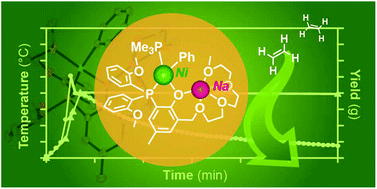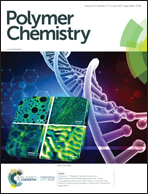Development of highly productive nickel–sodium phenoxyphosphine ethylene polymerization catalysts and their reaction temperature profiles†
Abstract
We have successfully applied a pendent Lewis acid design strategy to enhance the ethylene polymerization rates of nickel phenoxyphosphine catalysts. Our heterobimetallic complex is among one of the most productive coordination insertion catalysts reported to date for nickel. Due to its tendency to generate large reaction exotherms, it is necessary to apply continuous temperature control and low catalyst loading to achieve optimal efficiency.



 Please wait while we load your content...
Please wait while we load your content...
